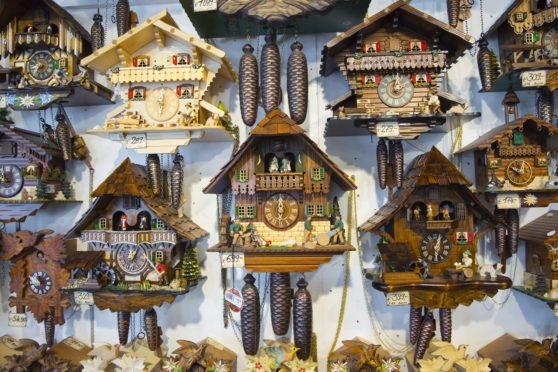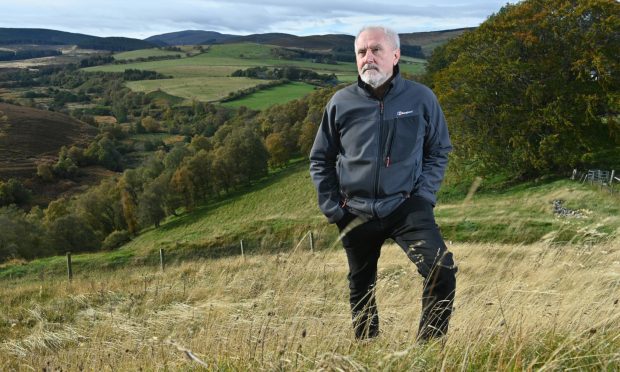As a busy ranger in the Cairngorms, when you’re working with the public in some of the most spectacular and beautiful landscapes in the country, the memorable moments come thick and fast.
But even though I’m still not half way through the 2019 season at Mar Lodge Estate and there are several months to go, I already know what this year’s highlight will be.
It happened on a guided walk we were leading last month for some American tourists around the Linn of Dee and Glen Lui. The River Dee was peaty brown under a leaden sky, the blaeberry luminous green in the morning dampness, and we were walking through the forest on our way back to the car park when one of our guests stopped in her tracks, paused and then asked: ”What’s that noise?”
I listened. The river was rushing and a few birds were singing. The landscape was alive but I couldn’t hear anything out of the ordinary.
“Is that someone’s phone?” she persisted.
I listened again. There were no electronic sounds to be heard, but I did then hear something off to our right. “Oh!” I said, now realising what she was referring to. “That’s a cuckoo”. She listened intently and right on cue it came again…and again….and again, repetitions of its distinctive two-note call rhythmically chiming out through the forest.
“Cuc-koo….cuc-koo….cuc-koo”.
Her face lit up and then she said, almost joyously, “but it sounds exactly like the clock!”
In that moment I realised, albeit somewhat surprised, that this was the first cuckoo she had ever heard. She confirmed as much when I asked her about it, and went on to explain how there had been a cuckoo clock where she grew up in the United States. She was therefore familiar with the sound, but not the bird itself.
The cuckoo’s backstory is every bit as odd as its call, so I seized upon the opportunity to explain to our guests a bit about its ecology: how it migrates here from sub-Saharan Africa, how it lays its egg in the nest of a completely different species of bird, how the newly hatched cuckoo chick then pushes all the rival bird’s eggs (or even chicks) out of the nest, and how the exhausted ‘parasitised’ foster parents then raise the cuckoo (which is now perhaps five times their size) as if it were their own.
Given that pretty much all the flora and fauna we have here in Scotland is also found elsewhere beyond our shores, and given that other far off places often have similar versions of our native birds (American vs European kestrels for example) I’d lazily assumed that our familiar cuckoo was present in North America, or that they at least had their own counterpart.
It turns out there are indeed a few species from the Cuculidae (cuckoo) family in the United States, but not Cuculus canorus, the ‘common cuckoo’ so familiar across Europe and Asia. Crucially though, in the part of the United States our visitors were from, the species of cuckoos they do have sound nothing like ours. Our native cuckoo appears to be the only one that makes that distinctive, descending ‘minor third’ two-note call.
I pondered the wonderful oddness of global human culture, where people can live thousands of miles beyond a bird’s natural range and therefore never actually see or hear it themselves, but still grow up with that unmistakable sound being a familiar feature of their daily lives. Even so, despite the cuckoo’s obvious familiarity I think maybe our American guest assumed, not unreasonably, that the strangely comical utterances of its clockwork counterpart must have been wildly exaggerated representations of an actual cuckoo. Too clockwork. Too comical. Too fake in nature.
And indeed, just last week I saw a similar reaction after I uploaded to Facebook a 30-second film clip I shot from the window of my flat in Mar Lodge. It was a slow panning shot of the grounds on a beautiful sunny day with no wind whatsoever, and with very little background sounds other than a cuckoo calling repeatedly (and therefore loudly) from close by. It was almost comically idyllic, hence my sister watching it and adding the comment: “Come on – you’ve added the cuckoo right??!”
Both reactions were effectively expressing disbelief at what they heard, as if to say “Wow, that’s not real, is it? Surely it doesn’t ACTUALLY sound like that?”
Well yes, it does. Clearly that’s a testament both to the craftsmanship of German cuckoo-clock makers and to the lungs of the cuckoo itself. But the encounter on the guided walk was a genuinely lovely moment for me as a ranger as well, because it reaffirmed once again the power of the great outdoors to connect with people in unexpected and spontaneous ways, and its superb capacity to educate. And in this case, being able to see the natural world inspire such an animated and enthusiastic response in someone when they suddenly realised that the natural truth is actually much stranger than the fiction, was something I will never forget.
Ben Dolphin is an outdoors enthusiast and president of Ramblers Scotland











